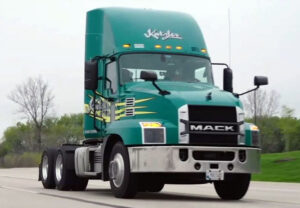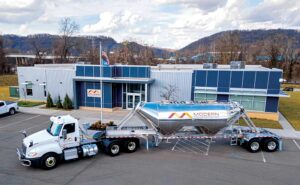If it feels like your company’s driver training and other educational programs are falling on deaf ears when participants leave the classroom and return to the road, it might not be a case of poor attitude or an inability to learn on the part of the trainees.
According to training experts, many companies go to great lengths to educate their employees — only to overlook one critical part of the process: consistent follow-up.
“You never want to stop educating. You want to have recurrent education. Communication is huge, and it differs with different segments of industry,” said Mike Brust, director of safety and loss prevention for the Arkansas Trucking Association.
“The less-than-truckload side is going to see the drivers face-to-face quite a bit and you can easily schedule meetings and impart information,” he explained. “For a truckload carrier, you often don’t see those drivers for months. In that situation, you have to discuss things — pat them on the back, let them know they’re not forgotten, that they’re part of the team. That’s extremely important.”
Technology offers a great assist in this process, limited only by the creativity and imagination of the training team, Brust said.
“One item that I’ve seen to be very successful is the use of video,” he said. “Use a phone to video record drivers performing a job properly, such as pre- and post-trip inspections, proper three points of contact getting into and out of a tractor, proper lifting, proper backing, etc.
“Employees like to see one of their co-workers in the videos; I have used this in the past with great success,” he added.
Brust says the best companies recognize that instructions from even the best training teams usually pale in comparison to advice from employees that others look up to, especially when adopting new materials and adapting to change. The most successful training programs engage employees who are respected by their peers early in the process.
“When I worked for FedEx and other truckload carriers, we brought those folks in and we explained (the new material) to them — how it benefits them and how it benefits the company,” he said. “Whenever we had major changes going on or something worth looking at, we’d bring those guys in or contact them through a conference call to get their feedback and their buy-in. Once you have their buy-in, that goes a long way in how things are perceived and accepted by everyone else.”
Even with that endorsement, it’s up to each individual employee to learn, accept, and put into practice whatever new material is being presented. This can be difficult to accomplish, no matter how much benefit the changes represent.
Dr. Gina Anderson, CEO of Luma Brighter Learning, says having an intentional approach to the presentation of material, combined with thorough follow-up, presents the best chance that the materials are learned and applied consistently.
“The first step in the learning process is to get a learner’s attention — and then you have to keep it,” she said.
“Our minds quickly begin to wander, so even though the person is physically in the room where training is happening, the reality is that their minds most likely are elsewhere,” she warned. “With safety training, it is imperative to use information processing encoding strategies to help learners remember information indefinitely.”
One vital strategy is to focus on the most important information for learners to retain.
“For example, our cognitive abilities have limits. It is critical that coaches identify what they want the learner to remember after the learning session so that those critical understandings can be reinforced in multiple ways, in multiple mediums, over time,” Anderson said. “Educational goals are broad and overarching, while short-term objectives are measurable steps taken to achieve goals; therefore, it is more effective to articulate outcomes in measurable deliverables.”
Anderson says companies should not overlook a final two-part step following training: Offer recognition of employees who completed the training and seek ongoing feedback about the quality of the training itself. This offers powerful tools to improve both learners and educators.
“It is important to build rewards and recognition into any learner program,” she said. “Game-based techniques like company stores, rewards, recognition, leaderboards, and shout-outs can all contribute to increased engagement and enjoyment in learning.
“Creating meaningful assessments and feedback loops can help instructors determine how to improve learning, which is imperative in building impactful and effective education,” she continued. “Formative assessments can be accomplished through surveys, content ratings, and feedback loops, to name some examples.”
Jeffrey Arnold, executive director for the North American Transportation Management Institute (NATMI), also suggests several strategies to ensure learners understand the material and to reinforce learning both during and after training.
“Evaluate the trainee’s recall of the desired behaviors by asking the learner to recall the techniques presented during the training and repeat what they remember,” he said. “Then you can review or reteach any key items they miss.”
Learning to apply classroom training to situations on the road is vital.
“You should also ensure that the learning can be applied in a safe setting where students can practice and you can observe how effectively the new techniques are being applied, providing coaching and reinforcement where necessary,” he said.
Arnold even suggested conducting a ride-along to help ensure new concepts are being applied under real-world conditions.
“On a more general note, to reinforce learning, supervisors should acknowledge progress, celebrate accomplishments and provide positive feedback, consistently and frequently,” he said. “Habits are formed through repetition and reinforcement.”
This article originally appeared in the May/June 2024 edition of Truckload Authority, the official publication of the Truckload Carriers Association.
Dwain Hebda is a freelance journalist, author, editor and storyteller in Little Rock, Arkansas. In addition to The Trucker, his work appears in more than 35 publications across multiple states each year. Hebda’s writing has been awarded by the Society of Professional Journalists and a Finalist in Best Of Arkansas rankings by AY Magazine. He is president of Ya!Mule Wordsmiths, which provides editorial services to publications and companies.








